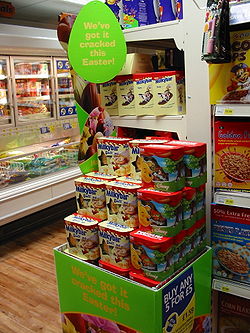Functions of contract packaging

There can be a variety of reasons for using contract packaging. [1] [2]
- A contract packager may have specialized equipment and expertise needed for a particular packaging operation.
- A contract packager carries the capital costs of packaging machinery and the personnel costs of packaging line workers
- A manufacturer can focus on its core competencies and outsource packaging to a contract packager
- There may be a temporary need for additional capacity: surge projects
- Contract packagers often can be more flexible than a large corporation to schedule urgently needed production.
- A test market, promotion, or product modification may need a limited packaging run to produce products for evaluation
- Primary packages can be sent to a contract packager for assembling Multi-packs or a Point of sale display
- Some large retailers or Warehouse clubs demand special package sizes or printing.
- Bulk products can be sent to a contract packager for making Private label products and packages.
- Clinical trials of medical devices or Pharmaceutical drugs often need a limited packaging operation for preparation of trial material